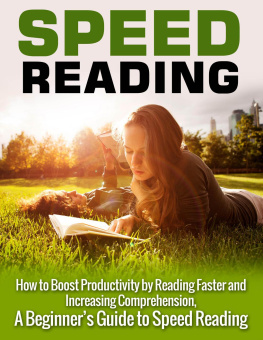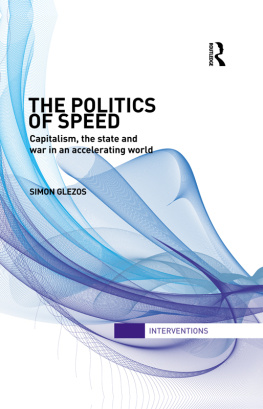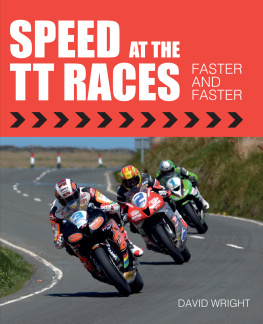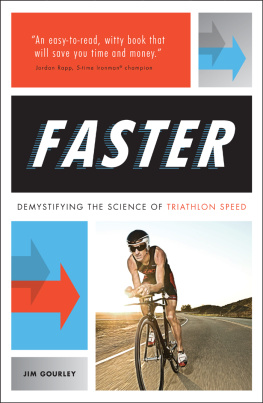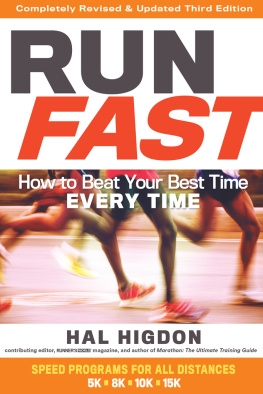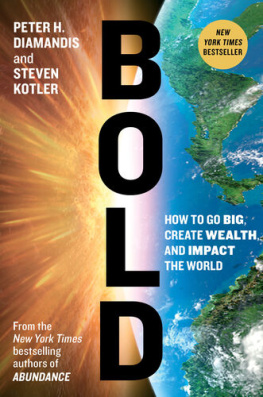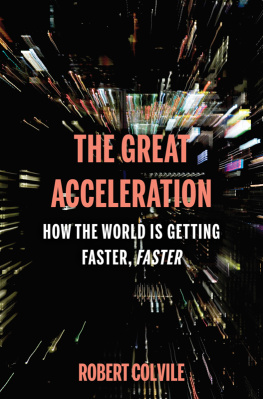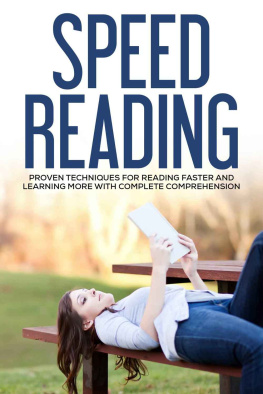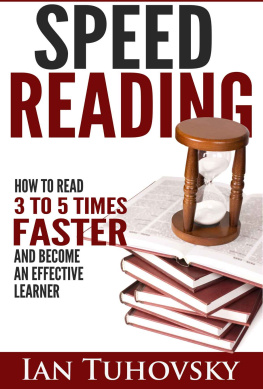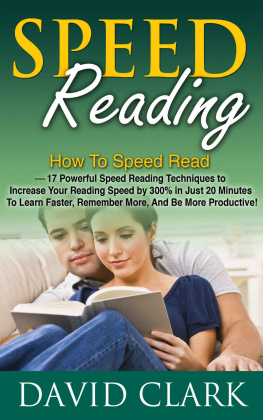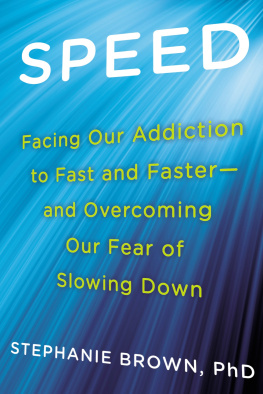SPEED LIMITS
ALSO BY MARK C. TAYLOR
Recovering Place: Reflections on Stone Hill
Rewiring the Real: In Conversation with William Gaddis, Richard Powers, Mark Danielewski, and Don DeLillo
Refiguring the Spiritual: Beuys, Barney, Turrell, Goldsworthy
Crisis on Campus: A Bold Plan for Reforming Our Colleges and Universities
Field Notes from Elsewhere: Reflections on Dying and Living
After God
Mystic Bones
Confidence Games: Money and Markets in a World without Redemption
Grave Matters (with Dietrich Christian Lammerts)
The Moment of Complexity: Emerging Network Culture
About Religion: Economies of Faith in Virtual Culture
The Picture in Question: Mark Tansey and the Ends of Representation
Critical Terms for Religious Studies
Hiding
Imagologies: Media Philosophy (with Esa Saarinen)
The Ral, Las Vegas, Nevada (with Jos Mrquez)
Nots
Disfiguring: Art, Architecture, Religion
Michael Heizer: Double Negative (with essay by MCT)
Tears
Altarity
Deconstruction in Context: Literature and Philosophy
Erring: A Postmodern A/theology
Deconstructing Theology
Unfinished... : Essays in Honor of Ray L. Hart
Religion and the Human Image (with Carl Raschke and James Kirk)
Kierkegaards Pseudonymous Authorship: A Study of Time and the Self
MARK C. TAYLOR
SPEED LIMITS
Where Time Went and Why We Have So Little Left

Published with assistance from the foundation established in memory of James Wesley Cooper of the Class of 1865, Yale College.
Copyright 2014 by Mark C. Taylor.
All rights reserved.
This book may not be reproduced, in whole or in part, including illustrations, in any form (beyond that copying permitted by Sections 107 and 108 of the U.S. Copyright law and except by reviewers for the public press), without written permission from the publishers.
Yale University Press books may be purchased in quantity for educational, business, or promotional use. For information, please e-mail sales.press@yale.edu (U.S. office) or sales@yaleup.co.uk (U.K. office).
Designed by Sonia L. Shannon.
Set in Garamond type by Integrated Publishing Solutions.
Printed in the United States of America.
ISBN: 978-0-300-20647-0 (cloth)
Library of Congress Control Number: 2014935570
A catalogue record for this book is available from the British Library.
This paper meets the requirements of ANSI/NISO Z39.481992 (Permanence of Paper).
10 9 8 7 6 5 4 3 2 1
For Aaron and Frida, Kirsten and Jonathan
You are running too fast
Now you are tired for the first time
Your happiness can catch up with you.
Friedrich Nietzsche
Contents
Acknowledgments
Writing is a solitary activity that is impossible without a supportive community. The purportedly proper name of the author is always a pseudonym for otherssome known, some unknown, some living, many deadothers who speak through the writers words, which are never his own. Speed Limits: Where Time Went and Why We Have So Little Left grows out of questions I have been pondering since I wrote my first bookKierkegaards Pseudonymous Authorship: A Study of Time and the Selfmore than four decades ago. Over the years, I have developed a philosophy of culture that attempts to understand where we have come from and where we might be heading. Having begun this journey during the tumultuous yet optimistic 1960s, I never could have predicted that the world would be even more fragmented and fragile as I approach the end. Along the way, I have learned lessons and absorbed insights from far too many writers, artists, friends, colleagues, and students to name here. I would, however, like to express my appreciation to a few individuals for their special contributions to this book: Esa Saarinen for his keen critical eye and boundless enthusiasm; Michael LeWitt for helping me decipher financial markets; David Shipley for guidance in unraveling tangled financial news media; Gil Anidjar for always making me look at issues from a different angle; Magnus Bernhardsson, Arnfrur Gumundsdttir, and Gunnar Matthasson for introducing me to Iceland; Richard Robb for his extraordinarily careful reading of the manuscript; Margaret Weyers for her unfailing interest and support; Julie Carlson for her careful editing; Chelsea Ebin for many conversations and her careful attention to detail; Don Fehr for his consistent confidence in this book even when mine wavered; Jennifer Banks and John Donatich for their enthusiastic response to my work; Jack Miles, for too many years of friendship to count; John Chandler without whom I would not have become the teacher and writer I am today; and, finally, my familyDinny for her patience with obsessions neither of us understands; Aaron, Frida, Kirsten, and Jonathan whose fast-paced lives have made me rethink much of what I once thought I knew; and Selma, Elsa, and Jackson for teaching me that despair is not an option.

December 13, 2013
Introduction
SPEED TRAPS
Call waiting... endless conference calls... mandatory Skype meetings no matter where you are or what time it is... urgent weekend business trips to deal with what could have waited until Monday... just-in-time everything... sleeping with an iPhone beside the bed... checking email all night... receiving email while in a cab heading to dinner with a friend and returning to the office... longer and longer workdays week after weekseventy, eighty, ninety hours without a break. In real time, everything speeds up until time itself seems to disappear, and fast is never fast enougheverything has to be done now, instantly. To pause, to delay, to stop is to miss an opportunity and to give a competitor the edge. Speed has become the measure of successfaster chips, faster computers, faster networks, faster connectivity, faster news, faster communications, faster transactions, faster delivery, faster product cycles, faster brains, faster kids, faster lives. According to the gospel of speed, the quick inherit the earth.
How did this new world of speed emerge, and why does it seem to be inescapable? The most obvious answer is technology. Information, communications, and networking technologies are creating a new world that bends back to transform human life into its own image. Moores law, according to which the speed of computer chips doubles every eighteen months, now seems to apply to life itself. My life is faster than my fathers life, my childrens life is faster than my life, and the lives of their children, already hooked on iPhones and iPads, will be faster than theirs. This is not idle speculation but a fact. The examples of speed with which I began these reflections are all taken from the lives of my children and their families. They are young professionalstwo lawyers, a financial adviser, and an advertising managerwhose lives are trapped by speed. The speed revolution, it is important to stress, affects different people in different ways; indeed, speed has become a, if not the primary, socioeconomic differentiator. As some people speed up, others slow down; as some people work more than they want, others work less than they want or even not at all; as some people get ahead, others fall behind. What winners and losers in this new fastpaced economy share are the insecurity, anxiety, and discontent that speed creates.
Next page

